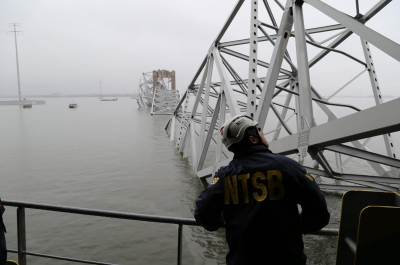(Bloomberg) -- As oil markets look for the green shoots of a price recovery, LNG participants are hunkering down for a long winter.
The most influential executives, investors and traders in the liquefied natural gas market will gather in Perth, Australia, this week for the industry’s biggest conference. While Brent oil has surged about 50% since hitting a 12-year low in January amid the worst energy crash in a generation, LNG continues its downward slide.
For crude, two years of spending cuts have throttled output and begun to ease an unprecedented period of oversupply. In the LNG markets, where projects cost billions of dollars and take years to build, a backlog of developments sanctioned when prices were higher are bringing supply online faster than demand can soak it up.
“It looks like we’re entering the down cycle for LNG rather than coming out the other side,” Jeff Brown, president of consulting firm FGE, said by phone from Singapore. “For the spot market in the next several years, it looks like there’s going to be a lot of LNG out there chasing buyers.”
Oil and LNG prices have historically been linked because traditional long-term contracts priced the gas in relation to crude. That correlation held through 2014 and 2015, as prices for both fuels tanked amid a global glut.
Opposite Directions
The two are now heading in opposite directions. Spot LNG in Singapore slipped to $3.954 per million British thermal units the week of April 11, the lowest since Singapore Exchange Ltd. began assessing it in September 2014 and extending its decline into a fifth month. Brent, meanwhile, recovered from its early-year crash to post its best first quarter in four years. The global oil benchmark rose 1.6% to $42.62 a barrel by 10:23 a.m. New York time.
Oil production comes from a mixture of short-, medium- and long-term drilling projects, while LNG output only comes from years-long efforts to build liquefaction plants and export terminals, said Trevor Sikorski, an analyst with Energy Aspects Ltd in London. In the U.S., where shale suppliers can go to production from drilling within months, producers have cut about 600,000 barrels a day of output since a June peak.
“In oil, the big thing is the loss of production, as drilling activity around the world has dropped off and that’s balancing the market,” Sikorski said. “LNG is going to continue to throw gas at the world as major projects come on stream and need to recover their big costs. It’s a perfect storm of stuff to keep the spot market low.”
Liquefaction Action
LNG export complexes cool the fuel to minus 256 degrees Fahrenheit (minus 160 Celsius) to shrink its volume so it can be shipped aboard ocean-going tankers. As U.S. and Australian companies boost output an international gas market is emerging akin to the long-established one for the more readily transportable crude oil.
About 42 million tons a year of liquefaction capacity is expected to come online this year, boosting global supplies by 14%, according to the International Group of Liquefied Natural Gas Importers. The majority of the new capacity will be in Australia, where Chevron Corp. recently shipped the first cargo from its $54 billion Gorgon project.
The new supply was drawn by expectations of rampant demand growth in Asia that failed to materialize. South Korea and Japan, the world’s two largest consumers, each reduced LNG shipments by about 4 million tons in 2015 because of slow economic growth, mild weather and increased use of alternative fuels, according to the importers group.
Market Deficit
The oversupply may only last a few years as low prices force the cancellation of some projects, setting the market up for a potential shortage the next decade. Woodside Petroleum Ltd and partners including Royal Dutch Shell Plc and BP Plc last month scrapped plans to develop the $40 billion Browse venture in Australia citing an “extremely challenging” market.
There may be a deficit of 75 million metric tons of LNG per year by 2025, which would require $250 billion in investment through 2020, Sanford C. Bernstein & Co. estimated in November. However, the market is well-supplied to 2018 and possibly to the end of the decade, it said.
“This imminent supply surge has been well known for some time, and developers built in anticipation of high Asian demand,” said James Taverner, a Tokyo-based energy analyst for IHS Inc. “Demand fundamentals have turned bearish and the LNG market faces oversupply for at least the next few years.”





